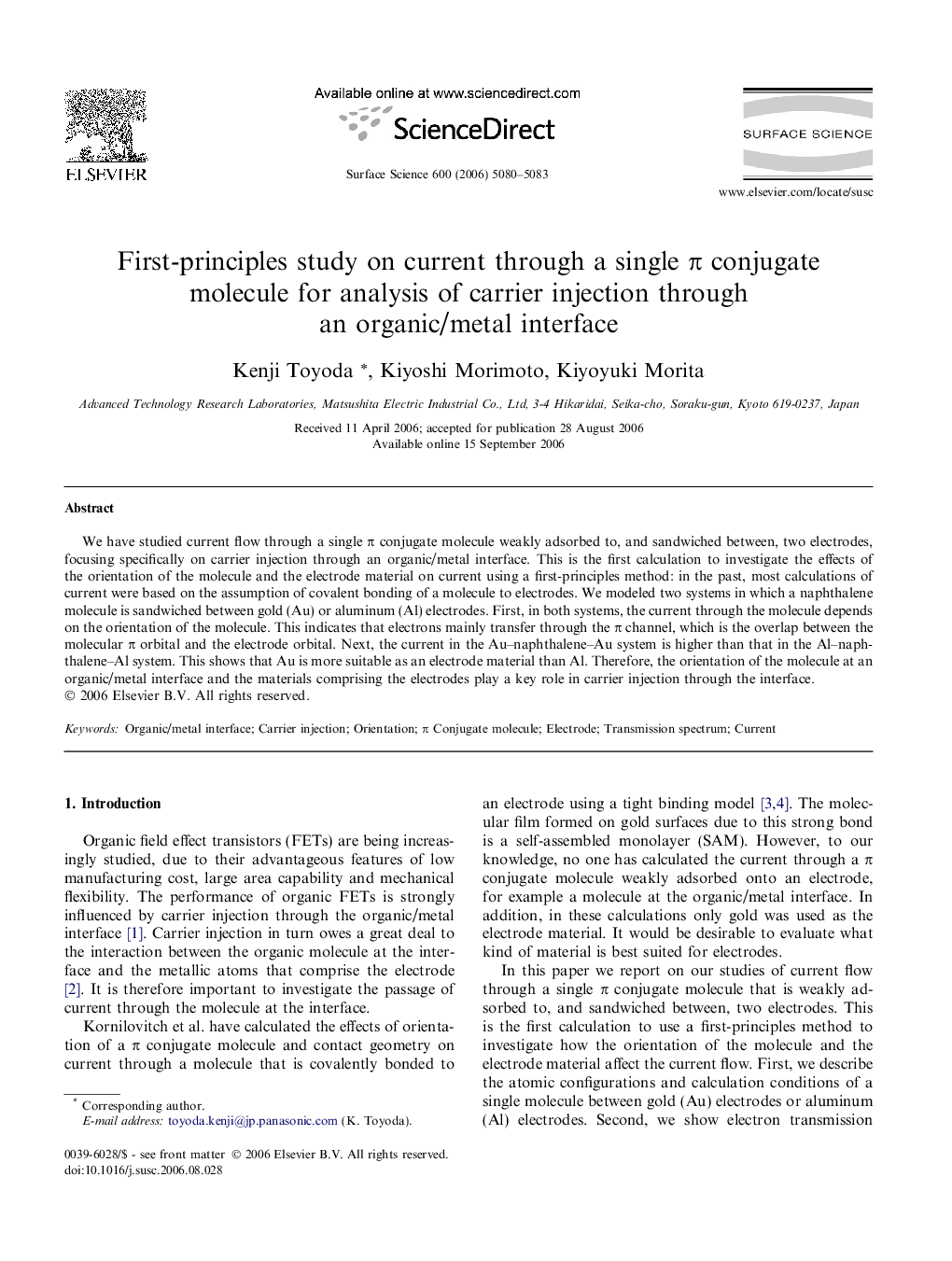| Article ID | Journal | Published Year | Pages | File Type |
|---|---|---|---|---|
| 5426713 | Surface Science | 2006 | 4 Pages |
We have studied current flow through a single Ï conjugate molecule weakly adsorbed to, and sandwiched between, two electrodes, focusing specifically on carrier injection through an organic/metal interface. This is the first calculation to investigate the effects of the orientation of the molecule and the electrode material on current using a first-principles method: in the past, most calculations of current were based on the assumption of covalent bonding of a molecule to electrodes. We modeled two systems in which a naphthalene molecule is sandwiched between gold (Au) or aluminum (Al) electrodes. First, in both systems, the current through the molecule depends on the orientation of the molecule. This indicates that electrons mainly transfer through the Ï channel, which is the overlap between the molecular Ï orbital and the electrode orbital. Next, the current in the Au-naphthalene-Au system is higher than that in the Al-naphthalene-Al system. This shows that Au is more suitable as an electrode material than Al. Therefore, the orientation of the molecule at an organic/metal interface and the materials comprising the electrodes play a key role in carrier injection through the interface.
